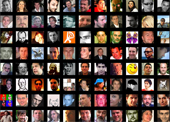How to Get Your Messages Retweeted
Many companies are trying to leverage the power of Twitter. New research identifies factors that increase the odds that a company’s tweets will be shared with recipients’ networks.
Topics
Social Business

If even a few followers retweet a message, its audience can increase by thousands.
Companies small and large have taken to using Twitter, the global microblogging service, to connect with customers and promote their brands and products. Some 77% of the Fortune Global 100,1 for example, have at least one Twitter account, and the average is 5.8 Twitter accounts, since accounts can be set up at the corporate level as well as for specific brands and events. With a user base of more than 100 million, Twitter offers marketers access to a very loyal group of customers. Twenty-seven percent of Twitter users log in every day, and 25% say they follow a brand and receive marketing messages from that brand. What’s more, 67% percent of brand followers indicate that they purchase the brand they follow on Twitter.2
Twitter’s marketing potential is best indicated by the brands with the greatest number of followers on Twitter, including Google with over three million followers, Whole Foods Market with over two million and Dell Outlet and Southwest Airlines with over one million followers each. Not only do these companies have a wide reach via Twitter, but they also have the ability to frequently push messages (several times a day if they wish) to self-selected followers. For all these reasons marketers should consider Twitter an important brand building resource — and many do. But is there a way to leverage that resource?
The Leading Question
How can marketers increase the likelihood that their tweets will be retweeted by their target audience?
Findings
- Humanize your brand. Show that you are about more than just selling products.
- Keep your message short, so the retweeter has room to add to what you have to say.
- Ask (politely) for the recipient to retweet. It might seem tacky, but it can work, providing your message isn’t crassly commercial.
True, the cost of sending out tweets is remarkably low. But the impact of a company’s tweet is somewhat muted by the fact that the people receiving the message know that it comes from a company whose ultimate goal — no matter what form the tweet takes — is to sell them something.
References
1. M. McNaughton, “77% of Fortune Global 100 Companies Use Twitter,” March 18, 2011, www.therealtimereport.com.
2. “Infographic: Twitter vs Facebook Demographics,” December 21, 2010, www.digitalbuzzblog.com.
3. B.J. Jansen, M. Zhang, K. Sobel and A. Chowdury, “Twitter Power: Tweets as Electronic Word of Mouth,” Journal of the American Society for Information Science and Technology 60, no. 11 (2009): 2169-2188.
4. D. Boyd, S. Golder and G. Lotan, “Tweet, Tweet, Retweet: Conversational Aspects of Retweeting on Twitter” (paper delivered at the 2010 43rd Hawaii International Conference on System Sciences, Honolulu, Hawaii, Jan. 5-8, 2010).
5. Ibid.
6. Ibid.

Comment (1)
cpascalar